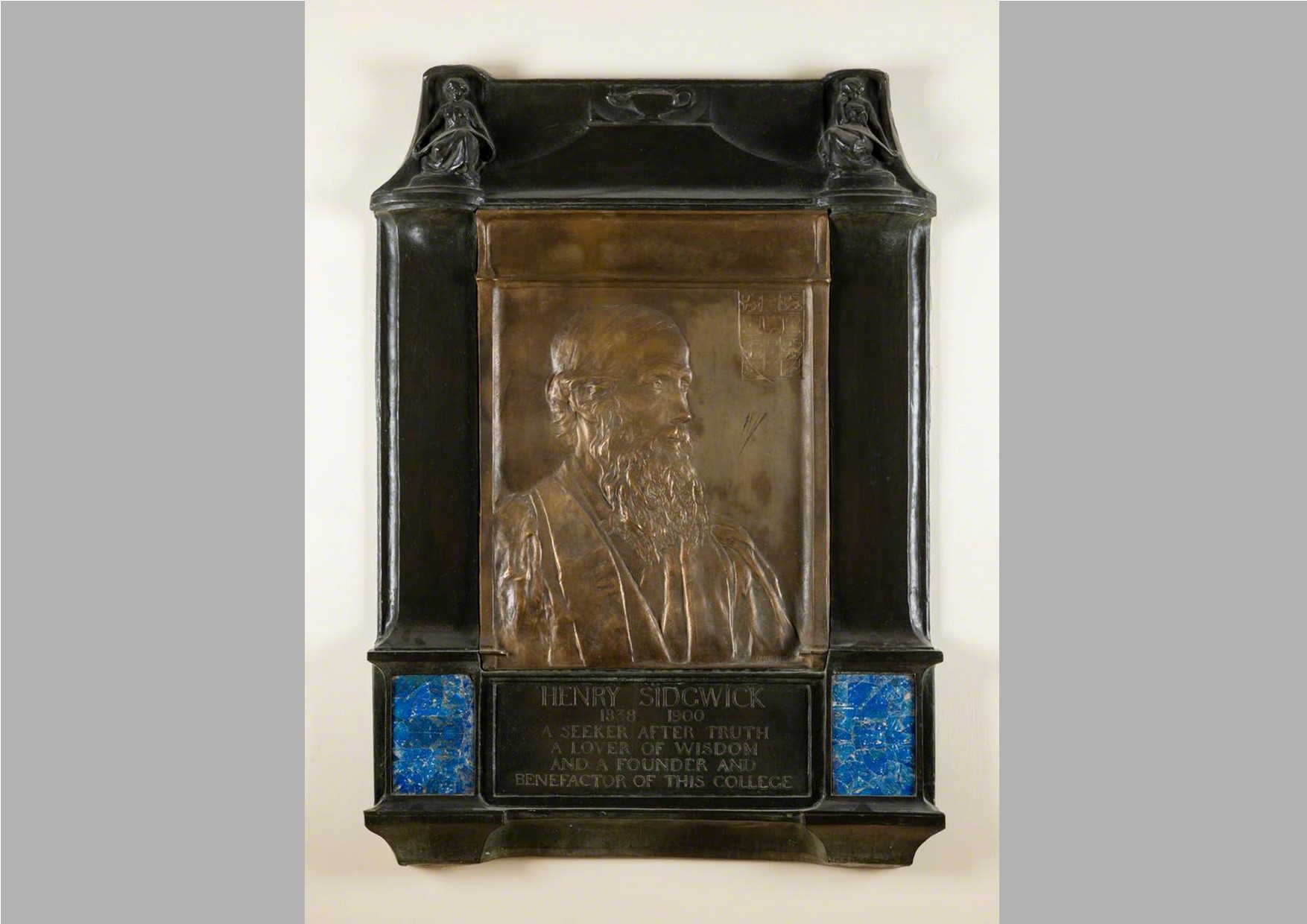
Henry Sidgwick (1838–1900), Knightbridge Professor of Philosophy, was co-founder of Newnham College with Millicent Garrett Fawcett. Alongside his lecturing and literary occupations, Sidgwick took an active part in the business of the University and in many forms of social and philanthropic work. He was also one of the founders and first President of the Society for Psychical Research. Sidgwick married Eleanor Balfour, who as Mrs Sidgwick, became the College’s second Principal. Sidgwick is commemorated in the names of Sidgwick Hall (where this portrait is displayed), as well as Sidgwick Pond, Sidgwick Avenue and the Sidgwick Site.
The portrait of Henry Sidgwick was created posthumously, being commissioned from 1904 by Mrs Emma Winkworth. Winkworth probably drafted the inscription for the sculpture, though as one of the era’s most influential philosophers, Sidgwick’s wisdom (as referenced in the text and symbolised by the oil lamp) would have been widely known. Winkworth served on the College Council from 1880 to 1905; she is recognised in Alice Gardner’s Short History of Newnham as a ‘munificent benefactor’, who gave many books to the library. The Council Minutes of February 1904 record Winkworth’s intention to engage the artist Gilbert Bayes to create the portrait, that ‘if successful’ would then be offered to the College. She sent photographs of the completed work to Council in 1905 and presented the portrait later that year.
Gilbert Bayes (1872-1953) was one of Britain’s major figurative sculptors and craftsmen. He worked in diverse media including bronze, stone, wood, ceramic and enamel, and at varied scale from medals to monumental and architectural sculpture. Bayes produced works in Arts & Crafts, Art Nouveau and Art Deco styles during his long career.
Bayes had a keen interest in applied arts, and produced many low relief works similar to the Sidgwick portrait. The inclusion of the bright blue lapis lazuli in the piece is notable, as Bayes became known for his interest in colour. His polychrome frieze from the front of Doulton House (demolished) is now in the Victoria & Albert Museum, where Room 111 charting the creative process of sculpture is named after him.
Bayes was a member of the Art Workers’ Guild. He was elected to the Guild in 1896 and became a Master in 1925. He would therefore have been acquainted with Selwyn Image, the artist of the Philippa Fawcett portrait.
In October 1931, Bayes’ dramatic horological sculpture The Queen of Time was unveiled at the main entrance of the Selfridges building in Oxford Street, a location that became known as ‘London’s Meeting Place’.


